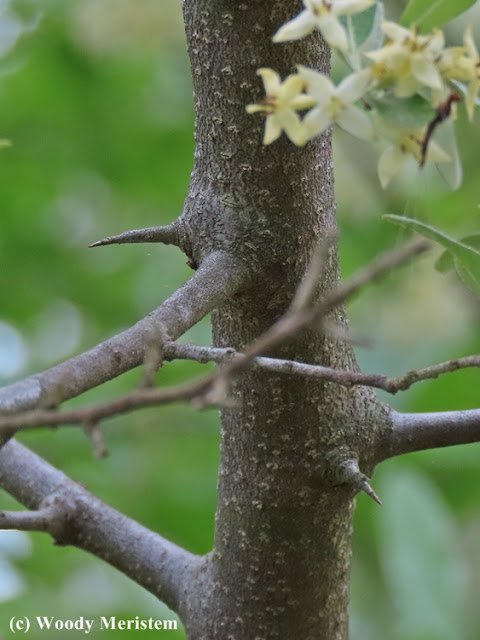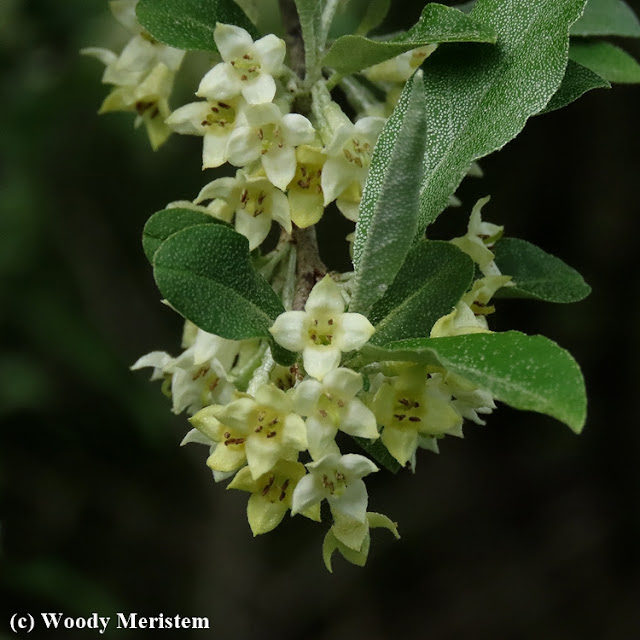Autumn olive (Elaeagnus umbellata ) is a shrub native to northeastern Asia and Japan that grows up to 20 feet tall. It has been widely planted in the northeastern U.S. for erosion control, wildlife habitat and, because it fixes nitrogen on its roots, for rehabilitation of disturbed sites like strip mines. Although it’s often confused with and even called Russian olive, Russian olive is a different species – a small tree.
Smaller stems and twigs of autumn olive bear short sharp-pointed stems that can produce a nasty puncture wound and are occasionally able to puncture vehicle tires –
The leaves of autumn olive are one to two inches long with smooth edges and small silver-colored scales on the lower surface –
In spring the plants have an abundance of small pale yellow trumpet-shaped flowers that have a wonderful aroma –
Those flowers are the precursors to small red fruits that also bear small silvery scales –
The fruit contains a large seed (pit) and has a tart taste, I like the flavor but many people do not. However the fruit is readily eaten by the many species of birds that typically feed on fruit –
Wild turkeys go to great lengths to feed on autumn olive fruit –
Mice and chipmunks devour the seeds, black bears tear the shrubs apart to get at the fruit and deer browse the twigs –
Autumn olive is widely considered an invasive exotic species: its leaves emerge earlier in the spring and last longer in the fall than those of many native species, the nitrogen it fixes allows it to grow on infertile sites and it can therefore out-compete most native plants.
Vast sums have been spent on efforts to eradicate invasive exotic plants, including autumn olive. So far, except in comparatively small areas, all of that money and effort have led to naught; is it time to accept that those species are here to stay – just asking.






Hello,
ReplyDeleteIt is a shame about the invasive plants, the flowers and berries are beautiful. I guess they are providing food for the deer, turkeys and the birds. Great photos and video. Thank you for linking up and sharing your post. Take care, have a happy weekend.
I say if the critters enjoy it and feed off it, then so be it! Lovely post Woody! ☺
ReplyDeleteWe have a lot of invasive plants here in Florida and it has been just about impossible to get them under control. It's nice when plants provide food for so many. Love your pretty deer!
ReplyDelete